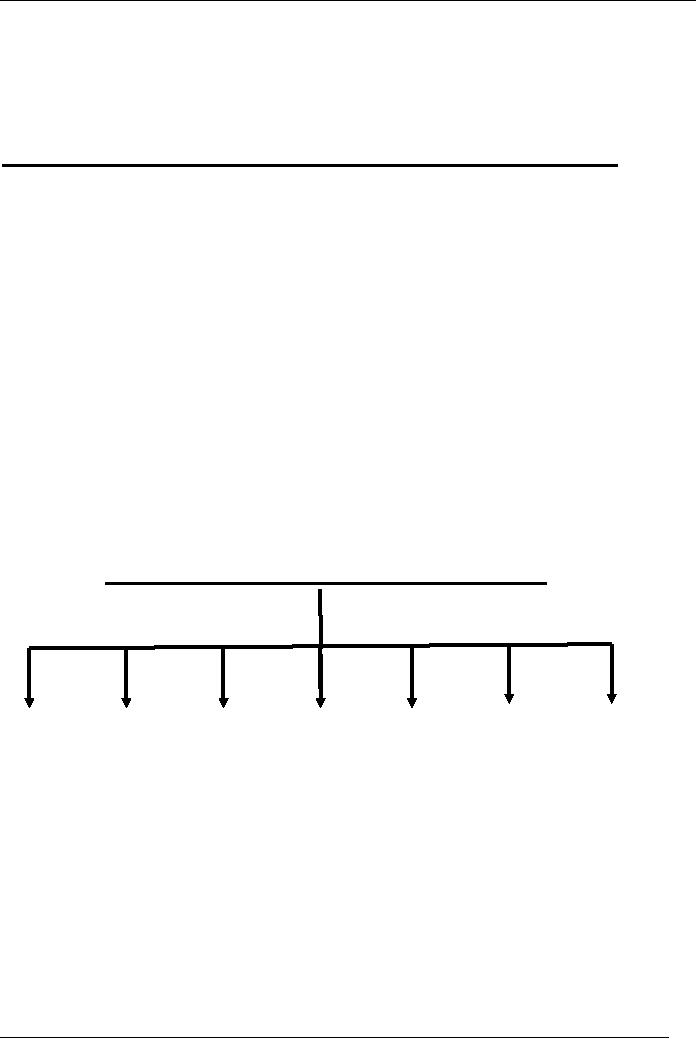 |

Advertising
and Promotion (MKT621)
VU
Lesson
24
ONLINE
ADVERTISING
OVERVIEW
This
lecture will further study
the structural challenges and
the new developments in
online
advertising
challenges and explain tool
for online advertising and
remind about
different
medias
use these days. Students
will also be introduced to integrated
advertising and integrated
marketing
communication (IMC) and the
reasons for its growing
importance. The elements
of
promotional
mix the concept of direct
marketing its various steps
of operation its
advantages
and
disadvantages will be highlighted besides
this and explanations regarding
the promotional
planning
process, sales promotion
different definitions and its
features will be discussed.
ONLINE
ADVERTISING CHALLENGES
Despite
being becoming popular
rapidly the structural
challenges and the new
developments
attached
to the online advertising
are the important
considerations for this
aspect.
Structural
Challenges:
�
At present planning process remains
a particular challenge.
�
Lack of good copy or Marketing
technique.
�
A compelling & irresistible
offer essential for prospect.
New
Developments:
�
Better Metrics.
�
Greater use of
Sound.
�
More customer
support.
�
Customized websites.
TOOLS
FOR ONLINE
ADVERTISING
For
online advertising information
about various tools used in
this context are explained
below:
Macromedia
Flash MX: It is a
professional standard authoring tool to
produce high
impact
Web
sites. High creativity is possible with
animation, interactive navigational
controls etc.
Adobe
Photoshop: It is
comprehensive toolset with
new capabilities. Experiments
with
painting
effects, patterns for stand
out images. Tools like
retouching, painting, drawing &
web
tools
can help in creating extraordinary
images.
JAVA:
It
is extensively used in internet media
for applets, graphics & other
interactive
applications.
HTML:
Hyper
text markup language is very
useful tool in creating web
pages.
DHTML:
It
is dynamic form of pre existing
HTML.
ASP
& JSP: Active
server pages & Java
server pages latest
technology for interactive
web
pages.
MEDIAS
USED IN THESE TIMES
To
sum up following medias are
extensively used in these days
for advertising:
�
Radio
69

Advertising
and Promotion (MKT621)
VU
�
TV
�
Newspapers
�
Magazines
�
Outdoor or out of
home
�
Directories
�
Internet
ADVERTISING
& INTEGRATED MARKETING COMMUNICATION
(IMC)
The
IMC approach in marketing planning and
strategy has been gaining
popularity since
1990's
and is being adopted by both
large and small companies. The
proponents of IMC argue
that
it is one of the easiest ways
for a company to maximize
return on its investments
in
marketing
and promotions. Some of the
reasons for growing
importance of IMC are
given
below:
�
Marketing budget being
shifted to consumer & Trade
promotions.
�
Retailers becoming more
powerful & dominating
manufacturers.
�
New tools target
specific rather mass media &
are economical.
�
Internet & e-commerce have
redefined way business is done &
the way companies
interact
with
consumers.
�
Companies emphasize communication with
consumers.
�
Advertisers want more
accountability of advertising agencies
& the change is taking place
rapidly.
�
There is rapid growth &
development of database
marketing.
The
tools used to accomplish an
organization's communication objectives
are refer to as
promotional
mix. Promotional mix has
various elements that need
to be appropriately chosen to
design
and integrated marketing communication
campaign these elements
which comprise IMC
are
illustrated below:
The
Promotional Mix The Tool for IMC
Elements
Advertising
Direct
Sales
Publicity
PR
Personal
Interactive
Marketing
Promotion
selling
Marketing
ADVERTISING:
Reasons
for importance:
1.
A cost effective medium to reach vast
audience.
2.
Very effective medium for
generating awareness, providing
knowledge & changing
attitude.
3.
A highly used tool for
creating brand
images.
4.
Extensively used as a tool
for creating differentiation
among various brands.
70

Advertising
and Promotion (MKT621)
VU
DIRECT
MARKETING:
�
Consumer credit
cards.
�
Direct marketing
syndicates.
�
Telemarketing.
Six
Steps of Direct Marketing
Operation
�
Establish objectives for
direct marketing. Decide what is
the role of direct marketing
in
overall
promotional planning of a
brand.
�
Collect database of target
audience.
�
Decide the media to be used.
�
Decide message to be sent to
customers.
�
How to handle responses, queries
& orders.
�
Measure & evaluate the
response.
Advantages
of Direct Marketing
�
Personalization
�
Cost.
�
Measures of effectiveness.
�
Selective reach.
�
Segmentation capability
�
Frequency.
�
Timing.
Disadvantages
of Direct Marketing
�
Image factor
�
Accuracy
�
Rising costs
�
Content support
SALES
PROMOTION:
Sales
promotion is basically define as "A
direct inducement that
offers an extra value
or
incentive
for the product to the
sales force, distributors or
the ultimate consumer with
the
primary
objective of creating an immediate
sale." Whereas the American
Marketing
Association
(AMA) in 1988 defined it as "Media &
non media marketing pressure
applied for a
predetermined,
limited period of time in
order to stimulate trial &
impulse purchases, increase
consumer
demand, or improve product quality."
However, the latest
definition adopting by
the
counsel
of sales promotion agencies
define it as "Sales promotion is a
marketing discipline
that
utilizes
a variety of incentive technique to
structure sales related
programs targeted to
consumers,
trade, and / or sales levels
that generate a specific , measurable
action or response
for
a product or service."
Features
of Sales Promotion
Following
are the features of sales
promotion:
�
Involves inducement to provide
incentive to buy.
�
Incentive is the key
element in a promotional
program.
�
Attempts to add value to
the product or service by
appealing to "value"
(pocket).
�
Acts as an acceleration tool.
Designed to speed up sales.
�
Targeted at different parties with
different types & levels of
incentives.
71

Advertising
and Promotion (MKT621)
VU
PROMOTIONAL
PLANNING PROCESS
The
process of integrated marketing
communication begins with the
review of marketing
plan.
A
marketing plan is a written
document that describes the
marketing strategy &
programs
developed
for a brand or product
line.
Information
essential for Marketing
Plan:
Basically
a market plan contains
following information:
Market
Situational Analysis: Internal
analysis external analysis
cover assessment of
companies
promotion capabilities review of
company's previous promotional
programs and
results,
assessment of brand image and brand or
product lines relative
strength and weaknesses.
External
analysis covers customer
analysis competitor analysis and
any trends which affect
the
promotional
program.
Specific
marketing objectives: These
provide direction and time
frame for marketing
activities
and mechanism for measuring
performance.
Marketing
strategy: It includes
selection of target market(s) and
the decisions relating to
marketing
mix.
Tactics
An action program: It is
require for implementing
marketing strategies, including
deciding
specific tasks and
responsibilities.
Evaluation
& Control Mechanism: This
involves evaluating performance and
providing feed
backs
so that necessary control
activities can be introduced and
necessary changes made
to
assure
that the objects are
met.
72
Table of Contents:
- INTRODUCTION TO ADVERTISING:Its growing importance, Explanation of Personal and non-personal selling
- INTRODUCTION TO ADVERTISING:ADVANTAGES, Communication, Information, Various Media
- INTRODUCTION TO ADVERTISING:FUNCTIONS OF ADVERTISING, IMPACT OF ADVERTISING
- ADVERTISING AND SOCIETY:PRACTICAL BENEFITS, ETHICS IN ADVERTISING, Marketplace & Market space
- MARKETING TOOLS:COMPONENTS OF MARKETING MIX, PRODUCT LIFE CYCLE (PLC) CURVE
- MARKETING TOOLS:SWOT Analysis, Contents & Structure, ROLE & FUNCTION OF ADVERTISING
- ROLE AND FUNCTIONS OF ADVERTISING:Structure of an Advertising Agency, How to Select an Advertising Agency
- ADVERTISING PLANNING:ADVERTISING OBJECTIVES, Types of Advertising, Positioning Strategies
- POSITIONING:BRANDING, 7 Steps of Creative Process, UNIVERSAL ADVERTISING STANDARDS
- ADVERTISING MESSAGE:Message Content, BASIC TERMS & CONCEPTS
- ADVERTISING BUDGET:4 Methods to determine, ADVERTISING RESEARCH, ADVERTISING RESEARCH
- ADVERTISING REACH:BROAD COMMUNICATION OBJECTIVES, ADVERTISING COPY METHODS, MEDIA RESEARCH
- PRE – PLACEMENT EVALUATION:ACCOUNT PLANNING, MARKET, COMPETITION
- WORKING OF ADVERTISING:12 Steps to develop effective campaign, SOURCE or THE ADVERTISER
- ADVERTISING RESPONSE HIERARCHY MODELS:AIDA MODEL, PROCESS REQUIRED TO GET BIG IDEA
- PROBLEM SOLVING STRATEGIES:Procedure to Handle Problems, In brief, Eight principles apply to consumer behavior
- CONSUMER BEHAVIOUR:ADVERTISING APEALS, MEDIA MIX DECISIONS, Target Rating Point (TRP)
- CREATIVITY IN ADVERTISING:Three aspects are most accepted, Four Rules of Creativity
- COPY WRITER:CHARACTERISTICS OF COPYWRITER, IMPORTANCE OF LANGUAGE
- WHY ADVERTISING:Advertising & Market Education, ADVERTISEMENT CAMPAIGNS
- METHODS TO APPRECIATE A PROBLEM:SPONSORSHIP—an important tool, Special Characteristics
- IMPORTANT TOOL OF ADVERTISING:TELEVISION ADVERTISING, TRANSIT ADVERTISING
- ONLINE ADVERTISING:Banners, Logos, Email Ads, Keywords on Search Engines, New Developments
- ONLINE ADVERTISING:Structural Challenges, Adobe Photoshop, JAVA, HTML, DHTML, ASP & JSP
- SALES PROMOTION:Consumer Oriented Promotion, HOW TO USE TRADE PROMOTION, Dealing with the Trade
- PUBLICITY:PERSONAL SELLING, ROLE OF SALES PERSON, FUTURE OF GLOBAL ADVERTISING
- MARKETING ENVIRONMENT:Competitors, The Target Buyer, Segmenting your Market, FUTURE OF MARKET GROWTH
- MARKETING PLAN:Situational Analysis, Macro – Environment Situation, Marketing Objectives, Financial Objectives
- MARKETING PLAN:PROMOTING BUSINESS IN LOW COST, SUPPLY CHAIN, BUYER IDENTIFICATION
- HOW TO BE GOOD CLIENTS:CHANNEL BUYERS, HOW TO BE GOOD CLIENTS 14 RULES
- CLIENT – AGENCY RELATIONSHIP:HOW TO KEEP CLIENTS (10 Ways), Three Points for Consideration
- CLIENT – AGENCY RELATIONSHIP:ADVERTISING WITHOUT AN AGENCY, LOGO AND CORPORATE IDENTITY
- NEWSPAPER ADVERTISING:AD PRODUCTION,TYPES OF NEWSPAPER ADS, CIRCULATION
- OTHER ADVERTISING MEDIUM:HOW TO USE MAGAZINES, HOW TO USE RADIO, Daypart buying options
- UTILITY OF VARIOUS MEDIA:TAPE OR FILM, UTILITY OF TV, DIRECT MAIL PACKAGE
- OTHER ADVERTISING MEDIA:POINT OF PURCHASE (POP), TRANSIT ADVERTISING, LIMITS OF ADVERTISING
- CONTINUOUS TRACKING:PLANNING CAMPAIGN, HOW TO UNDERSTAND ADS, ASK BASIC QUESTIONS
- SEASONAL ADVERTISING:MAXIMIZING IMPACT, THE WEB ADVERTISING, MEASURING ADVERTISING
- COMPONENTS OF ADVERTISING:BUY - OLOGY OF MIND, BUY - OLOGY OF MIND
- CRITICISM ON ADVERTISING:SHOULD ADVERTISING BE ABOLISHED,
- EFFECT OF ADVERTISING:HOW TO PROMPT AWARENESS, CREATING DESIGN THAT SELLS
- CREATING EFFECTIVE DESIGN:LANGUAGE OF TYPOGRAPHY, HEADLINES THAT COMMUNICATE
- WORKSHEETS:DEMOGRAPHICS OF YOUR TARGET, YOUR COMPETITOR
- GLOSSARY OF ADVERTISING:ACCOUNT EXECUTIVE, PROOF, VOICE OVER
- CONCEPT OF AN AD:HOW TO DEVELOP A CONCEPT OF AN AD